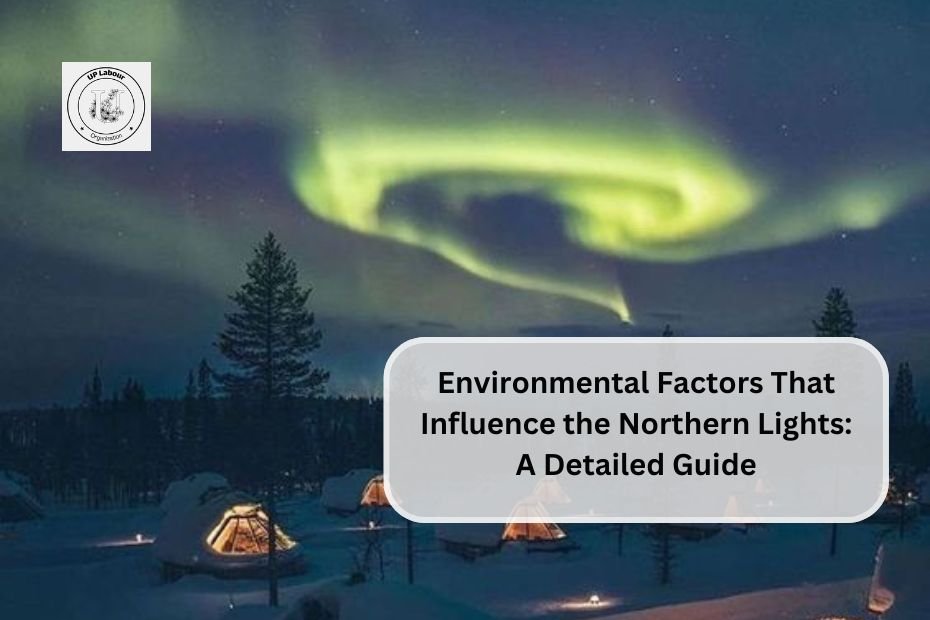The Northern Lights, or aurora borealis, are one of nature’s most spectacular displays, captivating observers with their vibrant colors and dynamic movements across the night sky. While primarily driven by solar activity, several environmental factors influence the visibility and intensity of these lights. Understanding these factors is essential for anyone hoping to witness this breathtaking phenomenon.
Solar Activity
The Solar Cycle
The Northern Lights are closely linked to solar activity, particularly the solar cycle, which lasts approximately 11 years. During this cycle, the sun experiences periods of increased and decreased activity, marked by the appearance of sunspots—dark regions on the sun’s surface associated with intense magnetic activity. The Solar Maximum phase, which is expected to peak around 2024-2025, typically results in more frequent and intense auroral displays due to increased solar flares and coronal mass ejections (CMEs) that send charged particles toward Earth.
Impact of Solar Flares
Solar flares occur when magnetic energy stored in the sun’s atmosphere is released suddenly. These flares can significantly enhance auroral activity as they increase the number of charged particles interacting with Earth’s magnetic field. The intensity of the Northern Lights is often measured using the Kp index, which ranges from 0 to 9; higher values indicate stronger auroras. As we approach the next Solar Maximum, scientists predict a surge in sunspot activity and consequently, more opportunities for witnessing vibrant auroras.
Atmospheric Conditions
Cloud Cover
Cloud cover is a critical factor that can obscure visibility of the Northern Lights. Increased precipitation and storm intensity, potentially linked to climate change, may lead to more frequent cloudy nights in regions traditionally known for aurora viewing. For instance, as global temperatures rise, weather patterns become more unpredictable; this can result in greater cloudiness that obstructs views of the auroras.
Air Quality
Air quality also plays a role in aurora visibility. Pollution can scatter light in the atmosphere, leading to hazy skies that diminish contrast and make it harder to see faint auroral displays. Areas with cleaner air tend to offer better viewing conditions. Therefore, traveling to remote locations with low light pollution and minimal atmospheric interference is advisable for optimal aurora viewing.
Geographic Location
Proximity to the Auroral Oval
The best places to view the Northern Lights are typically located within or near the auroral oval, a ring-shaped region around the North Pole where auroras are most frequently observed. Locations such as northern Norway, Sweden, Finland, Canada, and Alaska are ideal for aurora hunters. As solar activity increases, there are reports of auroras becoming visible at lower latitudes than usual; this phenomenon allows for broader access to experiencing these lights beyond traditional viewing areas.
Light Pollution
Light pollution from urban areas can significantly hinder visibility of the Northern Lights. Artificial lighting brightens the night sky and obscures celestial objects. Observers should seek dark-sky locations away from city lights to maximize their chances of witnessing the aurora. Measures such as using shielded outdoor lighting and promoting dark-sky initiatives can help mitigate light pollution effects.
Climate Change
Effects on Weather Patterns
Climate change impacts weather patterns globally, which can indirectly affect Northern Lights visibility. Increased greenhouse gas emissions lead to warmer temperatures and altered precipitation patterns. As noted by experts, one potential outcome is an increase in storm frequency and intensity, contributing to greater cloud cover in regions known for auroral displays. This cloudiness may reduce opportunities for viewing the lights.
Long-Term Implications
While climate change does not directly alter the mechanics behind auroras, its effects on atmospheric conditions could diminish their visibility over time. As weather becomes more unpredictable due to climate shifts, planning for optimal viewing conditions will require careful monitoring of both solar activity and local weather forecasts.
Conclusion
The beauty of the Northern Lights is influenced by a complex interplay of environmental factors including solar activity, atmospheric conditions, geographic location, light pollution, and climate change. As we approach a period of heightened solar activity with the upcoming Solar Maximum, opportunities for witnessing these stunning displays will increase—provided that observers take into account local weather conditions and seek out dark-sky locations free from light pollution.

